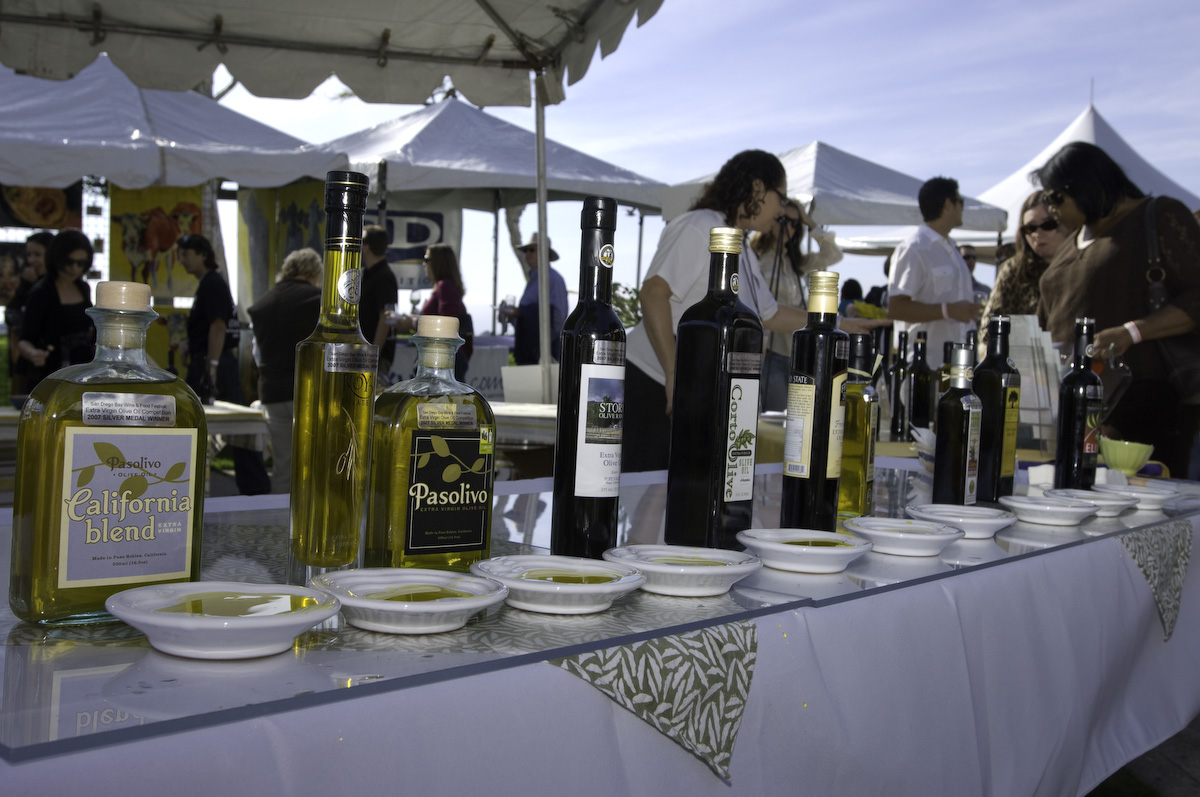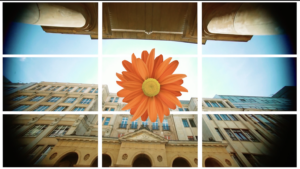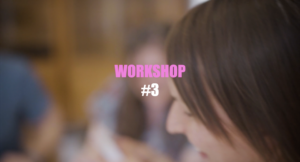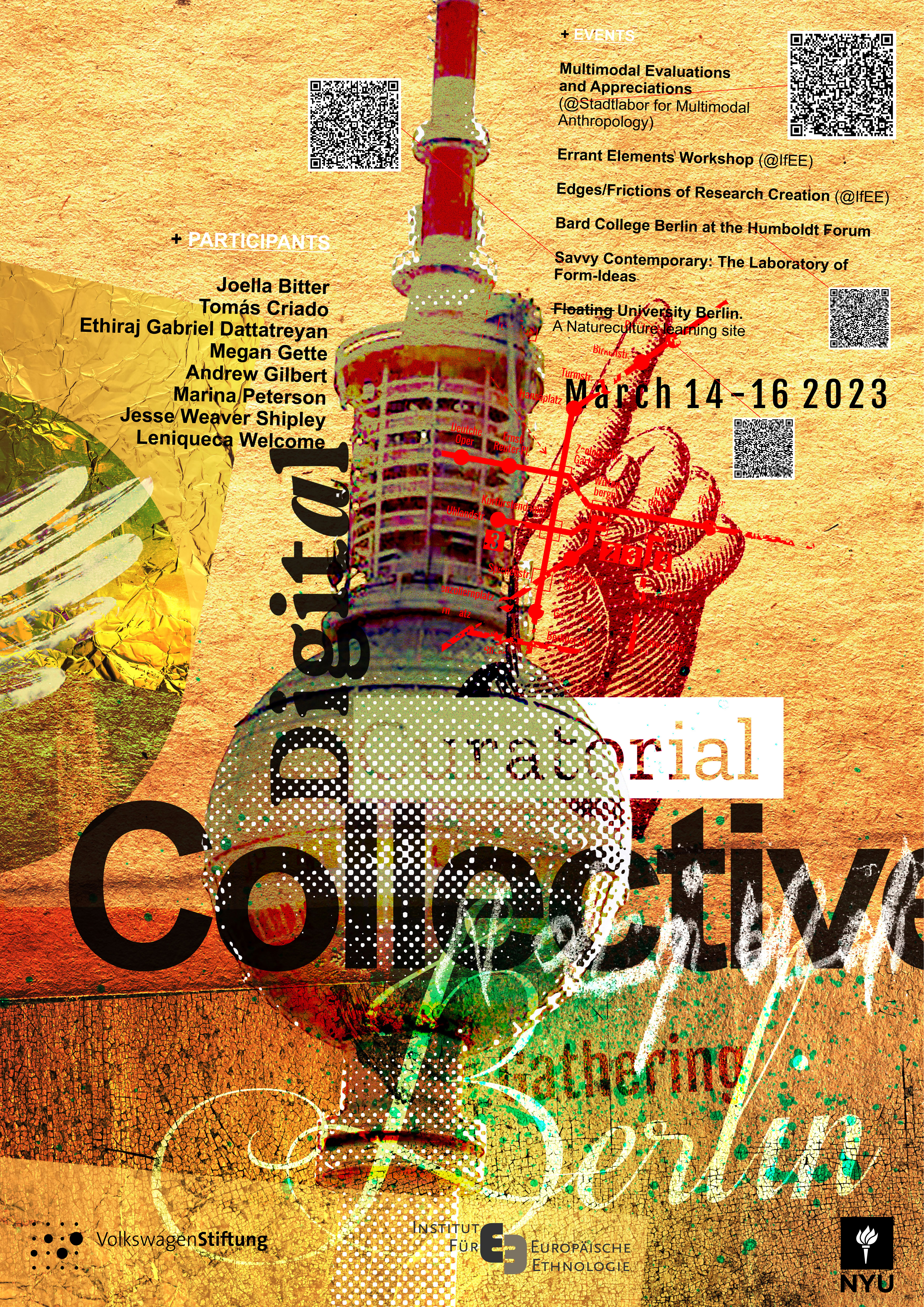Written by Tomás Criado
Introduction
Most of our discussions in the Multimodal Appreciation project seem to pivot around the idea of values: how can multimodal projects be valued, and what are the values of this kind of projects? The multimodal might seem to be expanding or unsettling the values of given or conventional text-centric anthropological practice, doing it so in different ways from other areas of practice where this has been attempted for years (ethnographic films or exhibitions, design anthropology, etc.). Also, some of these productions pose great challenges to understand their worth in anthropological terms, even if they could be discussed in the terms of other areas of practice (the arts, curatorial approaches, etc.)
However, what do we mean when we talk about values? When we debate amongst anthropologists, there seems to be enough of a constructivist consensus that this term doesn’t mean a set of predefined ethical or moral compasses to judge after the truth of a project has been settled (as in classic science/values divides) its good and bad prospects. Rather, what we tend to highlight are the criteria being mobilised, when not the codified conventions and forms of institutionalised ‘taste’ when approaching a given work or process.
Some of these notions might be articulated in words or other semiotic languages, and there might even be a discursive field providing conditions of legibility, helping us articulate about what might be relevant in these productions. For instance, collaborative anthropology or ethnographic film, with their journals, books, meetings and training workshops, have developed a very nuanced series of conditions to render a given project legible. However, these discursive fields and codified conventions, when they exist, are not always enough. Even if they might be useful, when only thinking about them we run the risk of ‘explaining away’ a project’s series of tensions or aspirations with already existing terms and approaches.
What becomes amply evident whenever we’re in the presence of any kind of ethnographic project (be it multimodal or not) is that, Bourdieu notwithstanding, taste doesn’t simply seem to be in the embodied predispositions we have come to be raised in as anthropologists or as people. Taste, in more sensory and practical terms, seems to partake of a more cumbersome process of educating attention (Ingold 2001). Indeed, appreciation is a process that needs to be elucidated in variegated embodied practices, many times plunging sensorially in the peculiar social and material world a project offers. This also happens, needless to say, when we read, a heavily material practice (if anything because typography or the readability of a page, not to speak of our vibes and reactions, are as important there as when we visit an installation).
Come what may, I’d love to suggest that ‘appreciation’ might have something to do with developing a taste for multimodal projects in their singularity, learning to value its nuances, and bring all of that to bear in settings where we approach complicated judgements (although, aren’t they all?) to decide about a project’s worth. Perhaps the virtue of those projects where we lack the conventional and codified words is that they force us to describe and, potentially, find words to articulate them. Yet, this description might need to go beyond simply ‘indexing’ a project, as if this could be done once and for all, also considering how documentation might contribute in a process of finding ever-growing nuances. But also, we need to be able to describe the settings and the conditions, the dispositions, we create to come to terms with a project.
That is, we might need to learn to approach and describe our appreciations and evaluations or judgements as processes where the ‘good’ and the ‘bad’ (however situated and relational they might be) are enacted in peculiar settings and through particular practices. I’d love to suggest that to do this, we could draw from the fertile conceptual and descriptive ground of valuation studies: an interdisciplinary crossroads of pragmatist philosophy, STS, economic anthropology and sociology, and cultural studies of taste, which has taken valuation and evaluation, worth and judgement practices as a peculiar area of inquiry (Lamont 2011). Peculiarly, this means paying attention not just to the peculiar social life of devices to materialise our evaluations – ranks or lists, and their power to enact cuts in between nuances – , but also to the practices of valorising (Vatin 2011), whereby we give value to things or change their values. Even if our project will need to deal with both valuation and evaluation, in this post, I’d love to stress the relevance of considering what valorisation brings to understand what’s at stake in multimodal appreciation.
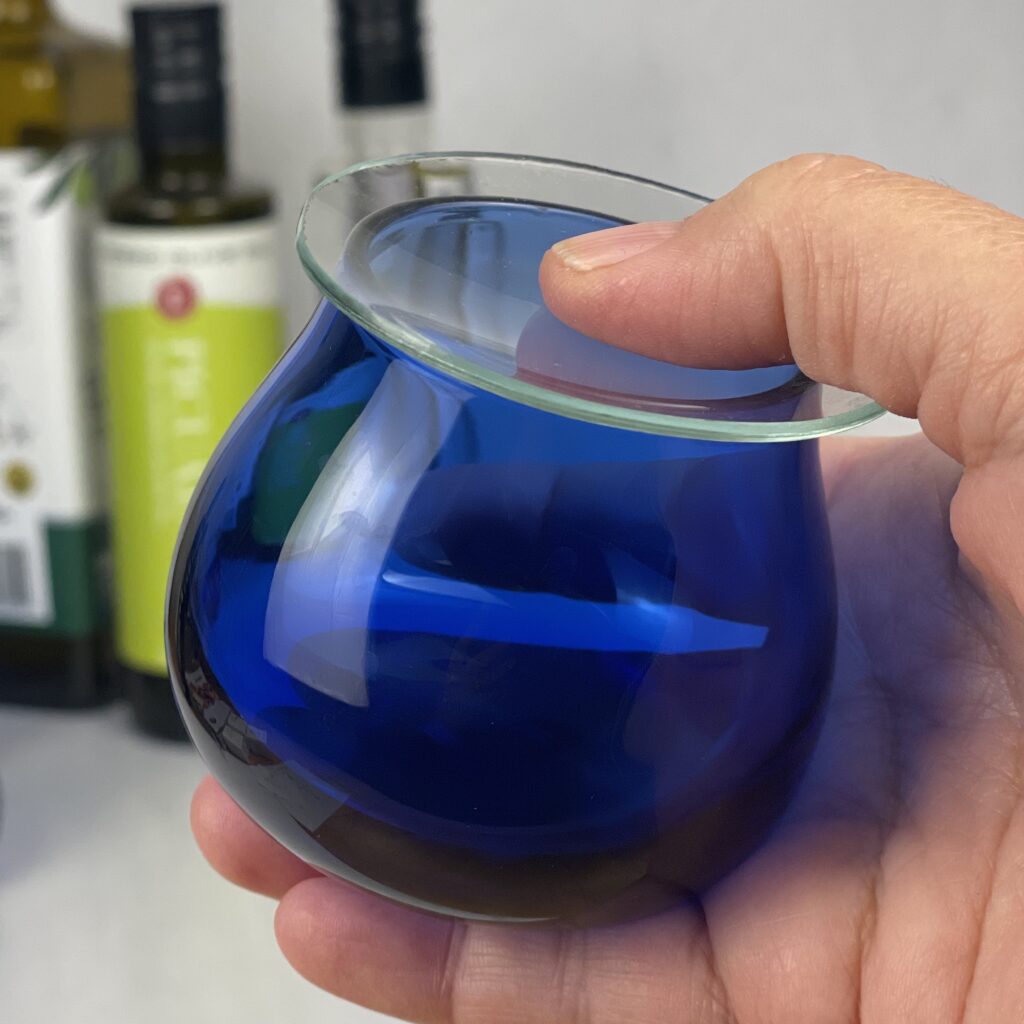
A practice of proliferating nuances
Tasting workshops are, perhaps, an interesting case in point–or should I say ‘food for thought’?–to discuss these valorisation processes.
Some ten years ago I took part in an olive oil tasting one, in the shop of one of Spain’s biggest olive oil producers. In it, we not only learnt to differentiate by name the different kinds of olives used for different commercial varieties, such as: arbequina, hojiblanca, picual. None of that would’ve mattered much had we not been plunged in tasting their nuances. To do so, we were offered samples, poured in wide blue cobalt glasses. We were instructed to hold the glass with the whole hand, since the heat might create an emulsion of the oil’s vapours, which was going to be crucial for our first approach: smelling, first undirected, then suggesting hints (“can you smell the slight taste of dry tomato?”).
Later, we were to try them out: directly drinking from the glass doing exercises with the tongue (since different nuances are to be sensed by different parts of the mouth, we were told). After we had done this repeatedly for a very longue while, cleansing our palate eating thinly cut apples to try out the sometimes ‘too complicated to feel’ contrasts between different varieties, we were instructed to try out their maridaje (coupling) with breads, salads or different dishes. Always going from undirected to more focused attention, we slowly were provided a simplified version of the charts expert tasters use to make the nuances of each oil apprehensible: their colours, the composition, etc.
Even if this was only a rookie training to start a path of becoming olive oil amateurs, the whole workshop stressed the enormous relevance of tasting: however commoditised and standard their production might have become, beyond regular contrasts and distinctions, each breed of olive oil needs to be tasted, and that’s why expert tasters are involved in the regular production process. In the peculiar ‘economies of qualities’ we seem to be living in, as Michel Callon et al. (2002) call them, making proliferate nuances is not only relevant to marketize only apparently similar goods – something that food portals, rating platforms, and food guides and prizes seem to have elevated to a whole mode of sociality –, but is also part and parcel of a process of experimenting with possible new goods, new products emerging out of tasking and its variegated effects. Much like in music or artistic works.
Indeed, one of the interesting appreciations this brings to the fore is the pragmatist understanding that we might need to approach valuation as operating a different notion of what an object, a good or a work is, far away from dualist bifurcations separating object from subject or culture. Rather than conceiving the production of objects we later value as if there was a Kantian version of them (the noumenon or das Ding an sich) beyond their valuation, the concern with valuation as a practice (Muniesa 2011) seems to plunge us in the problem that appreciation, the judgements enacted in peculiar circumstances can also affect the very things in themselves: not just that values might be relevant for their production but also that the boundaries of a work are not fully settled by the producer, since they grow or lose in nuances as such through these tasting practices.
Taste is, indeed, a collective activity, where rather than the producer alone trying to impose or negotiate its meanings, what matters are the wider series of meaning-making practices, where a work and its affordances (Hennion 2004, 2007) are appreciated inventing or repurposing different devices. An attention to appreciation or valuation as a mediated practice, in fact, requires us to pay attention to how peculiar socio-material conditions of appreciation– ranging from the material and embodied conditions to pay attention to the peculiar data sheets that enable us to focus on certain things and not others so as to register peculiar nuances – play an important role, partaking in granting different trajectories of the projects being valuated (Muniesa & Trébuchet-Breitwiller 2010).
In a piece reflecting on the relevance of odour kits for perfume professional ‘noses’, Latour (2004) uses the notion of articulation to discuss the process of “being affected by differences” (p.210) in a broad non-linguistic sense, which he dims are neither just ‘words’ nor ‘objects’ out there, but what he addresses as propositions. Expounding on this process, he argues:
“To say that odours are propositions articulated in part by the training session, the odour kit and all the other institutions, is not to say that they are ‘things’ – primary qualities – named in ‘words’ by the (arbitrary or socially constrained) labelling activity of a human subject. This is the key philosophical difference […] The articulation of the perfumes does something to the odours themselves, which is at once obvious if one takes into account the enormous mass of transformations they undergo in the hands of the chemical industry and fashion cultures, and hard to swallow since we risk losing the obstinate obduracy of chemicals which are ‘out there’ whatever we, humans, do to them” (p.212)
Tasting, in a nutshell, cannot be disentangled from the process of valuation nor the things being valued, because in valorising we come to render the world articulate. The relevant feature of articulation is that it also appears as a crucial evaluative criterion, since what matters is whether these propositions and the socio-material practices through which they are being proposed are interesting or not, that is, whether they enable to register differences or nuances in relevant ways:
“Fecundity, productivity, richness, originality are crucial features of a good articulation […] ‘Boring’, ‘repetitive’, ‘redundant’, ‘inelegant’, ‘simply accurate’, ‘sterile’, are all adjectives that designate a bad articulation” (p.215).
Peculiarly, in Latour’s terms, interest as a criterion of appreciation is not only in the eye of the beholder, but in the devices and the process devised to render differences articulate. Interest should also be maximised in the things being valued, since it might also mean providing the chances to show their own interests: that is, maximising the possibility of the things under valuation to resist to the very valuations, forcing those who evaluate to further increase the nuances…
How could our project invent devices enabling us to make the nuances of the multimodal projects proliferate, as well as to articulate their contrasts and distinctive features, also making these projects grow in articulation as we appreciate them? Put otherwise, through which kinds of practices might we grant a more nuanced life to these projects? In our first steps, the reflective process of developing a ‘metadata sheet’ and our meetings to discuss lists of projects and their approaches appear to hold such a potential. But will it be enough? What criteria of appreciation of multimodal projects might these practices enable us to practice? Put otherwise, what forms of anthropological practice might we be helping to articulate in doing so?
References
Callon, Michel, Cécile Méadel, and Vololona Rabeharisoa. “The Economy of Qualities.” Economy and Society 31, no. 2 (January 2002): 194–217.
Hennion, Antoine. “Pragmatics of Taste.” In The Blackwell Companion to the Sociology of Culture, edited by M Jacobs and N Hanrahan, 131–44. Oxford: Blackwell, 2004.
———. “Those Things That Hold Us Together: Taste and Sociology.” Cultural Sociology 1, no. 1 (2007): 97–114.
Ingold, Tim. “From the Transmission of Representations to the Education of Attention.” In The Debated Mind: Evolutionary Psychology versus Ethnography, edited by Harvey Whitehouse, 113–53. London: Berg, 2001.
Lamont, Michèle. “Toward a Comparative Sociology of Valuation and Evaluation.” Annual Review of Sociology 38, no. 1 (August 11, 2012): 201–21.
Latour, Bruno. “How to Talk about the Body? The Normative Dimension of Science Studies.” Body & Society 10, no. 2–3 (2004): 205–29.
Muniesa, Fabian, and Anne-Sophie Trébuchet-Breitwiller. “Becoming a Measuring Instrument.” Journal of Cultural Economy 3, no. 3 (2010): 321–37.
Muniesa, Fabian. “A Flank Movement in the Understanding of Valuation.” The Sociological Review 59 (December 1, 2011): 24–38.
Vatin, François. “Valuation as Evaluating and Valorizing.” Valuation Studies 1, no. 1 (2013): 31–50.
Picture credits
Featured image: CC 2007 Olive oil tasting at the San Diego Bay Wine & Food Festival
In-text image: CC BY SA 2023 Example of a regulation cobalt blue olive oil tasting glass with watch glass cover
